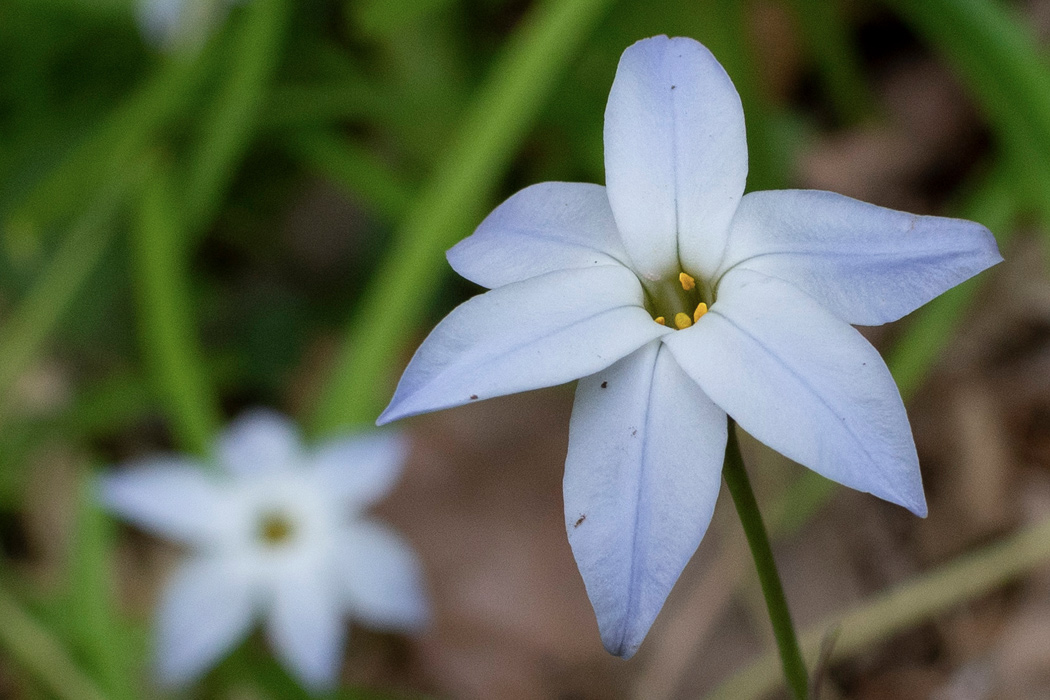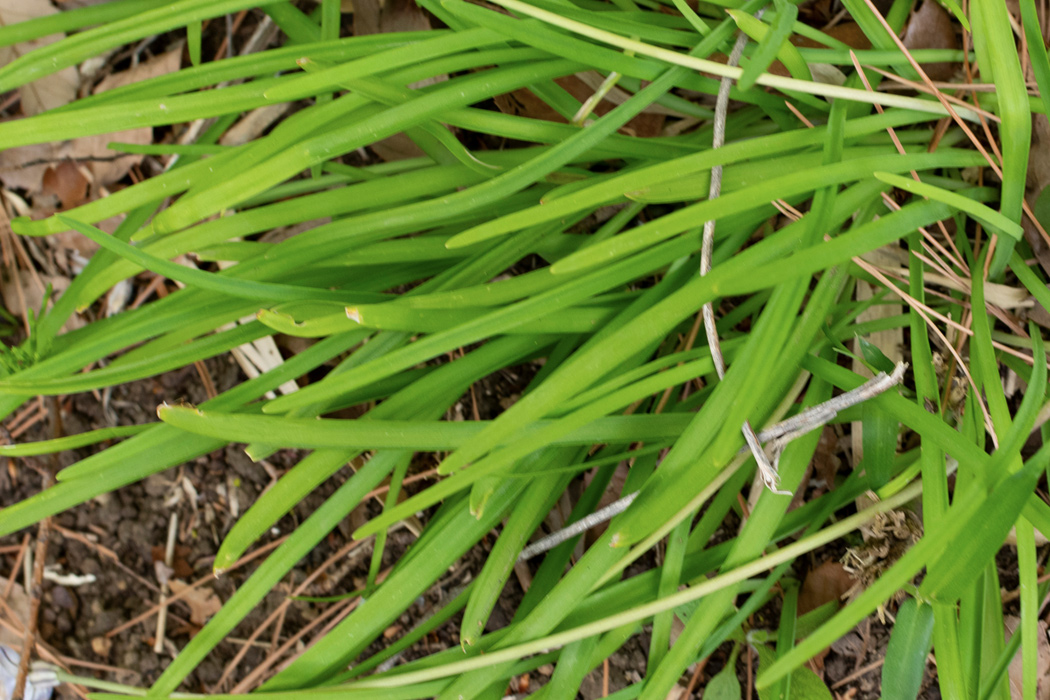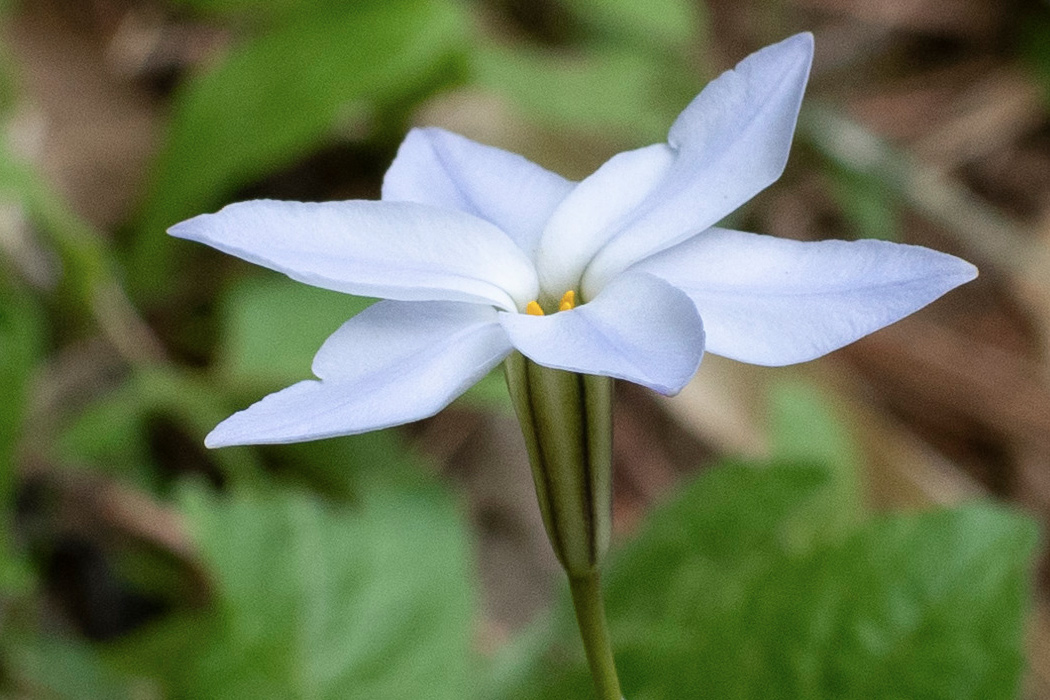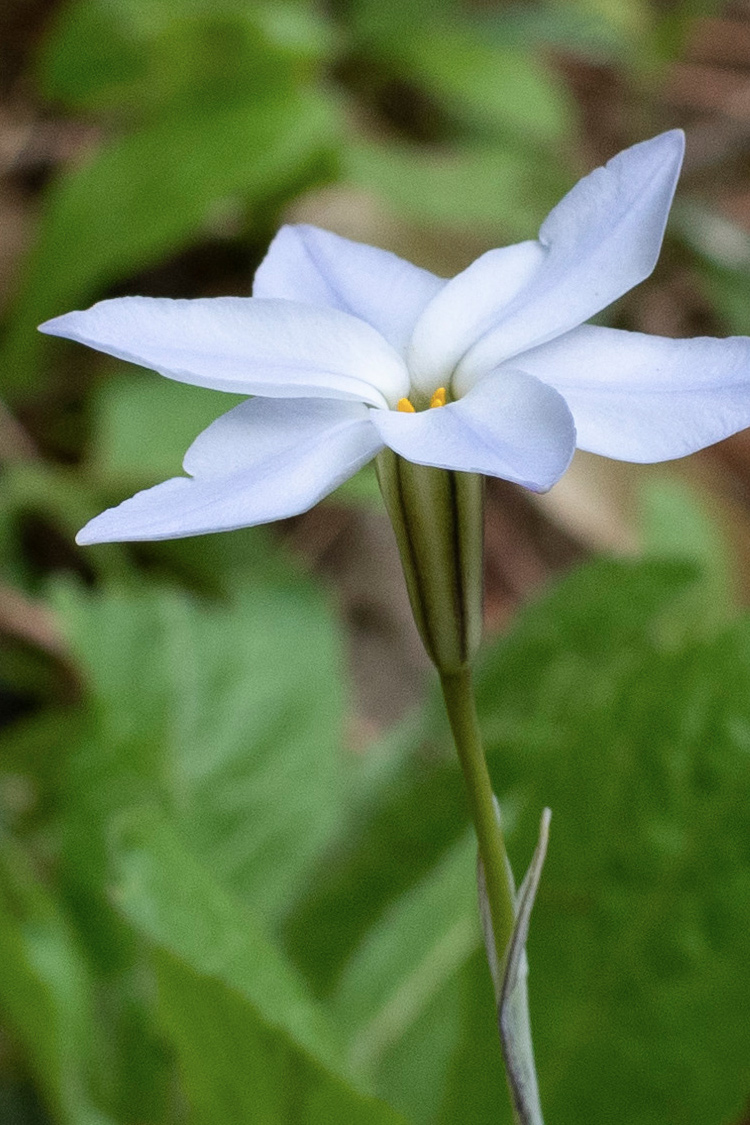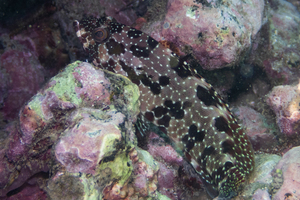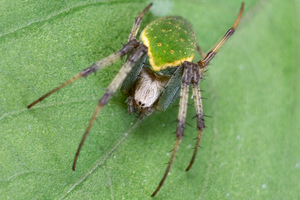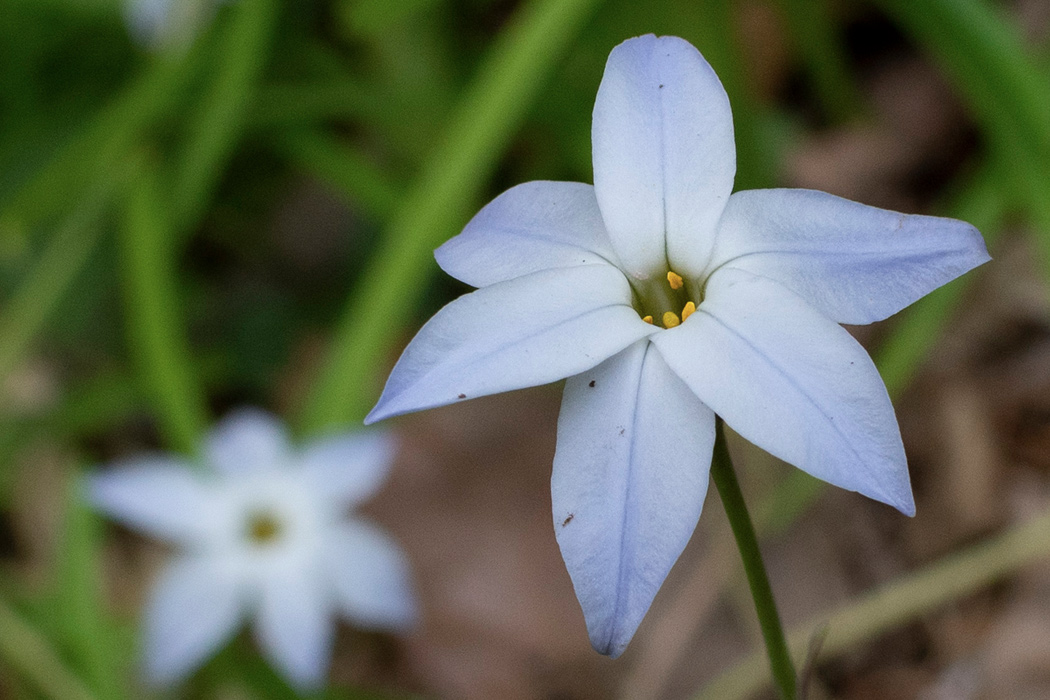
Spring star
Long narrow leaves resembling Chinese chives and white flowers.
| Scientific name | Ipheion uniflorum |
| English name | Spring star |
| Japanese name | 花韮 |
| Classification | Monocots |
| Classification details | Asparagales Amaryllidaceae |
| Full length | about 3cm (flower diameter) |
| Distribution | Native to Argentina. Naturalized all over Japan. |
Characteristics
A pale purple flower with six petals. The country of origin is Argentina, but it was introduced to Japan during the Meiji period and was naturalized. The petals are white with a line in the center and turn pale purple towards the tip. When viewed from the front, three stamens can be seen in the center. The leaves are slender like chives and about 20cm long. It smells like chives and onions.
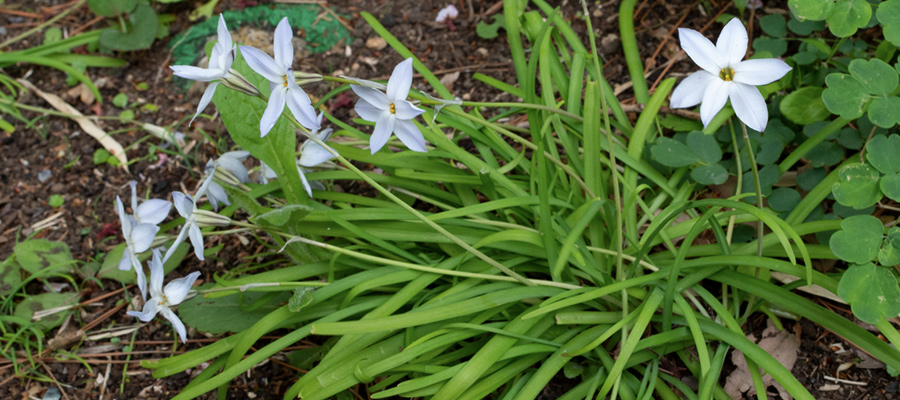
Ecology
In Japan, it blooms everywhere, such as vacant lots and flower beds. White flowers bloom in spring (March-April). It is a perennial plant that is resistant to cold weather, so if planted easily, it will spread.
Habitat
I took a picture of what was blooming in the forest behind my house. It blooms vigorously even in places with relatively little sunlight. I felt that it prefers soft soil and breeds. The star-shaped white flowers are modest and not bad, but be careful not to overgrow them.
Pictures
Introducing a picture of Spring star.
